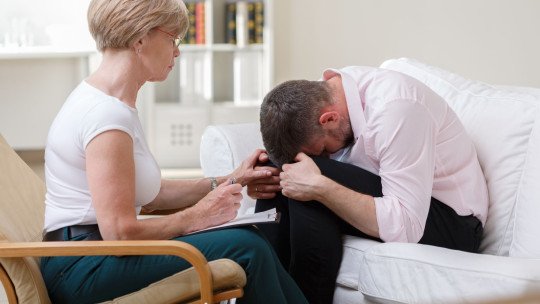
From the framework of Open Dialogue, psychosis is no longer considered an illness but is understood as a language The language of pain, experiences of abuse of power and/or trauma. A language that now should no longer be silenced. What’s more, the path is diametrically opposite, it is about listening to the “symptoms”. You have to talk to the person along with the family and other loved ones. Always speak from yourself, listen to yourself and be connected with the body in the present. Respect the process and the other democratically without imposing yourself.
Psychosis is no longer a disorder but is now understood as a failure of the environment. Although they do not refuse the drug, it goes from being the main solution to being a voluntary option. The person who manifests the “symptoms” is the one who carries the most pain. In fact, the word “patient” is often used, this time correctly, from the Latin patiens, the one who suffers.
What do we mean by “open dialogue”?
Therefore, what the Open Dialogue shows us is that the solution is not to plug up the problem, nor to silence the positive symptoms with prescription drugs (misnamed antipsychotics): hallucinations, delusions, disorganized behavior… But quite the opposite. Furthermore, it is becoming increasingly clear that positive symptoms are the least descriptive of PTSD (psychotic spectrum disorders).
However, they are undoubtedly the ones that make the most noise. Perhaps this is why they have been trying to silence themselves throughout history. Leave the diagnosis behind as a previous step to the solution. Diagnostic labels are calming at first, but later they become a huge problem for both the person and the rest of the environment
It is now known, thanks to Jaakko Seikkula’s group and its successful example in Western Lapland (Finland) for more than 40 years, that the path is, as many of us already suspected, diametrically opposed to what has been done in psychiatric hospitals. However, it is true that the shadow of horror and error will haunt humanity for years to come.
In Spain we have had very successful examples of the adaptation of the Open Dialogue framework. Such as the Early Psychosis Care Unit (UAT IC) of Alcalá de Henares in Madrid, directed by the psychologist Silvia Parrabera or the device put into operation by the psychiatrist Jordi Marfà in Badalona.
The fact of understanding psychotropic drugs as the main solution for Severe Mental Disorder (SMI) will surely in a few decades be seen as a total outrage Similar to the lobotomies of the early 20th century. Or even the bloodletting (or phlebotomy) that was done in the Middle Ages as a generic solution to health problems and that was practiced left and right until well into the 19th century.

What is the best time to intervene?
From the framework of Open Dialogue it has also been discovered that the best time to intervene, despite what one might expect, is in the middle of a crisis. When the symptoms are most flourishing. Perhaps because at this moment the environment is more receptive to finding solutions and, therefore, to dialogue.
From the Open Dialogue there are normally two or more therapists who intervene with the family in crisis They expand their network and are with them for the necessary time, taking responsibility for their work throughout the process. They facilitate dialogue and reflect in a sincere and transparent way about what they feel based on what they hear in each of the meetings.
In 2022, the University of Almería (UAL) presents the first University Expert on Open Dialogue in Spain. Coordinated by Dr. Adolfo J. Cangas, and with academic directors of the level of Silvia Parrabera and Jaakko Seikkula himself. Jordi Marfá, Cecilia Cruz, Sofia Cálcena and Olga Runciman are also renowned teachers in this Expert. With whom I have had the immense luck to be able to train.
Open Dialogue began more than 40 years ago as a way to organize psychiatric care services in Western Lapland, a specific area of Finland With overwhelming success in reducing the rates of “Schizophrenia” it continues to operate today. However, today it is known that it can be applied to multiple conditions, those specific to each medium, also respecting most of its principles. It is a method that is not only useful for the treatment of TMG. But it can also be practiced successfully for almost all mental health problems.
Today, meetings imbued with the spirit of this framework are beginning to be held in thousands of private and public centers throughout the entire geography of Spain and the planet. And the linguistic use of the plural term: Open Dialogues is also beginning to spread, since this allows us to cover the variability of interpretations and applications of this to different environments.









